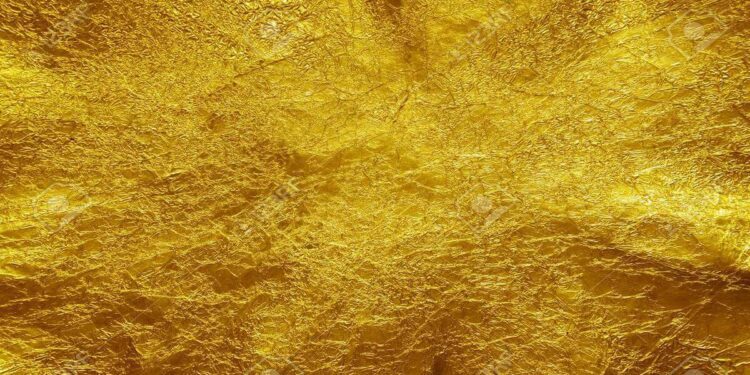A team of researchers has successfully created for the first time ‘goldeno’, gold sheets with just one atom thick which give this metal new properties in applications such as converting carbon dioxide and producing hydrogen or value-added chemicals.
The discovery was made by researchers at Linköping University (Sweden) and is published in the journal ‘Nature Synthesis’. Scientists have long tried to create gold sheets that are only one atom thick, but failed due to the metal’s tendency to cluster. But those at Linköping University have succeeded thanks to a centuries-old method used by Japanese blacksmiths.
“If you make an extremely thin material, something extraordinary happens, as with graphene. The same happens with gold. As is known, gold is usually a metal, but if it has a single atom-thick layer, gold can become a semiconductor,” explains Shun Kashiwaya, a researcher in the Materials Design Division at Linköping University.
To create ‘goldeno’, researchers used a three-dimensional base material where the gold is embedded between layers of titanium and carbon. But creating it proved to be a challenge. According to Lars Hultman, a professor of thin film physics at Linköping University, part of the progress was due to chance.
“We had created the base material with completely different applications in mind. We started with a electrically conductive ceramic called silicon carbide and titanium, where the silicon is in thin layers. Then, the idea was to coat the material with gold to make contact. But when we exposed the component to high temperatures, the silicon layer was replaced by gold within the base material,” he explains. This phenomenon is called intercalation and what the researchers discovered was gold and titanium carbide.
Coincidence
By chance, Hultman found a method used in the art of Japanese forging for over 100 years. It is called Murakami reactive and removes carbon residues and changes the color of steel in the manufacture of knives, for example. But it was not possible to use exactly the same recipe as the blacksmiths did.
“I tried different concentrations of the Murakami reactive and different etching times. One day, one week, one month, several months. What we noticed was that the lower the concentration and the longer the etching process, the better. But it still wasn’t enough,” says Kashiwaya.
The etching must also be done in the dark, since light creates cyanide that dissolves the gold. The final step was to stabilize the gold sheets. To prevent exposed two-dimensional sheets from curling up, a surfactant was added, specifically a long molecule that separates and stabilizes the sheets.
“The ‘goldeno’ sheets are in a solution, like cornflakes in milk. Using a kind of sieve we can collect the gold and examine it under an electron microscope to confirm that we have achieved it. And we have,” emphasizes Kashiwaya.
The new properties of ‘goldeno’ are due to the gold having two free bonds when it is two-dimensional. Thanks to this, future applications could include carbon dioxide conversion, hydrogen-generating catalysis, selective production of value-added chemicals, hydrogen production, water purification, communications, and much more.


